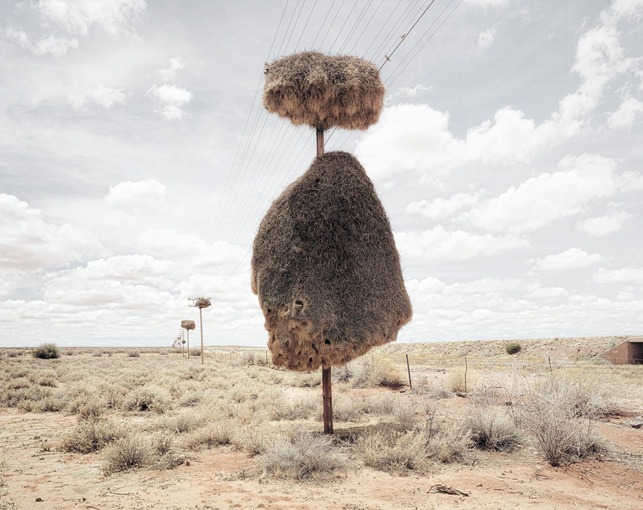Sharp spikes of straw protect the entrance tunnels from predators.
Some sociable weaver nests have remained occupied for several generations spanning over 100 years.
The nests are highly structured and provide birds with a more advantageous temperature relative to the outside.
The central chambers retain heat and are used for nighttime roosting.
The weaver birds are more than willing to welcome the guests.
More residents mean more eyes keeping a watch for danger.
And the weavers often learn from the other birds where new sources of food can be found.
These lovely pictures entitled Assimilation were captured by photographerDillon Marsh.







